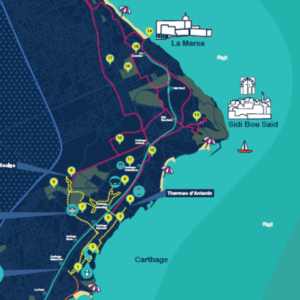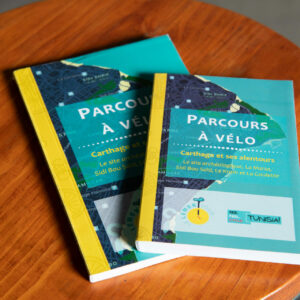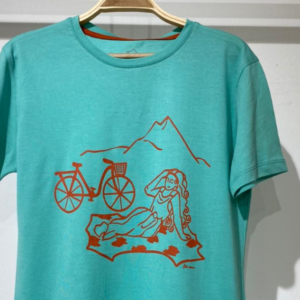Petite bourgade de plus de 25000 habitants, Tebourba est située au Nord de la Tunisie, sur la rive gauche de la Medjerda, à une trentaine de kilomètres à l’ouest de Tunis.
Un peu d’histoire
La ville est construite en partie sur le site de la cité romaine de Thuburbo Minus, donnant son nom à Tebourba, qui dépendait de la province d’Afrique proconsulaire.
Les grands événements à retenir sont les suivants :
- I er siècle av. JC : la ville compte près de 2 500 habitants et apparaît sur une carte du réseau routier romain, la Table de Peutinger * .
- II ème siècle : Sainte Perpétue et sainte Félicité (martyres connues du christianisme) y seront détenues avec leurs coreligionnaires avant leur mise à mort dans l’amphithéâtre de Carthage en 202 ou 203. Les restes d’une église, construite en leur mémoire durant les années de protectorat (1903) puis détruite en partie durant la 2 nde guerre mondiale, sont encore visibles aujourd’hui en ville.
- VI ème siècle : la ville donnera deux évêques connus : Victor, participant au concile de Carthage, et Germanus qui signe en 646 la lettre des évêques du consulat adressée au patriarche Paul II de Constantinople contre le monothéisme.
- XV ème siècle : la ville sera reconstruite par des Maures venus d’Andalousie qui sont à l’origine de l’application d’un plan d’urbanisme original, à savoir une trame urbaine en damier avec huit avenues convergeant vers une vaste place rectangulaire (le souk andalous) autour de laquelle sont construites mosquées, commerces et fondouks.
- XVII ème siècle : L’amphithéâtre romain, sera démoli pour laisser place à la construction d’un pont.
- XX ème siècle : Durant la Seconde Guerre mondiale, Tebourba est le lieu d’une importante bataille, du 29 novembre au 4 décembre 1942, au cours de laquelle s’affrontent les troupes anglo-américaines et les troupes italo-allemandes. La bataille est remportée par les secondes et la ville détruite.
*La carte de Peutinger est un fac-similé d’une carte datant de l’époque romaine, ancêtre de nos cartes routières. Elle se présente sous forme d’un long parchemin de 6m de long. On peut la découvrir ici :
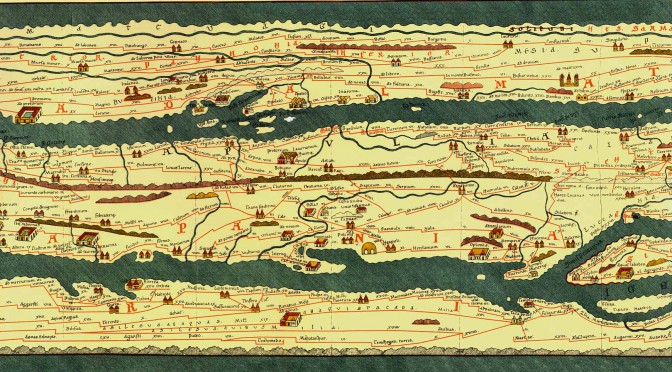
Economie
Située dans la vallée du seul fleuve pérenne de Tunisie, Tebourba a, dès l’époque antique, une vocation agricole basée sur la production de blé, d’huile d’olive et de vin.
La viticulture fortement développée sous le protectorat, connaît un renouveau actuellement à travers la production d’une AOC, les Coteaux de Tebourba, pour la production de vins rouges et rosés dont le célèbre Magon.
Elle possède également une importante zone industrielle que valorise une liaison ferroviaire directe avec Tunis. On pourra, à l’occasion d’un circuit cyclotouristique par exemple, découvrir une jolie petite gare de style colonial.
La ville possède un patrimoine antique et andalou. On peut ainsi y voir le pont-barrage d’El Battan, doté de seize arches, construit en 1690 sous le règne de Mourad II Bey, pour permettre à l’eau de la Medjerda d’irriguer les terres et actionner les moulins à foulons (battân) de la ville.
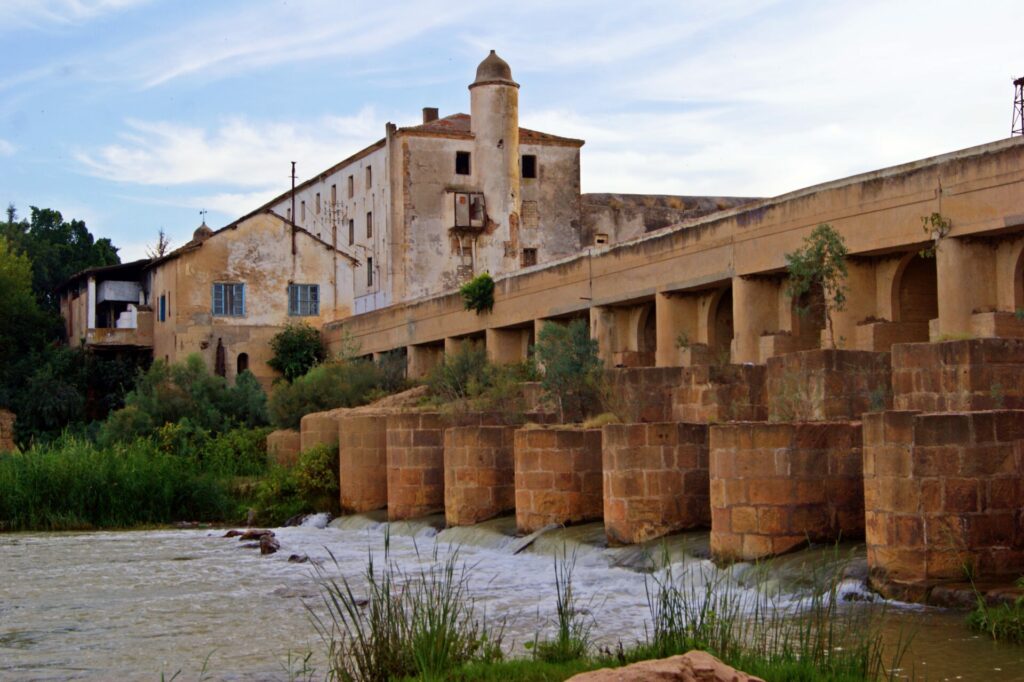
A voir sur place ou aux alentours
Tebourba et ses environs regorgent de traces de l’histoire… on pourra se lancer, à vélo biensûr, dans une chasse aux trésors antiques.
Huilerie
En parcourant la ville on pourra visiter l’huilerie Mahjoub, créée en 1896 et toujours active. Pour les curieux de passage, avides d’histoire, les moulins Mahjoub, c’est également un petit musée qui a su préserver les outils d’antan et dont on peut découvrir le fonctionnement sur place.
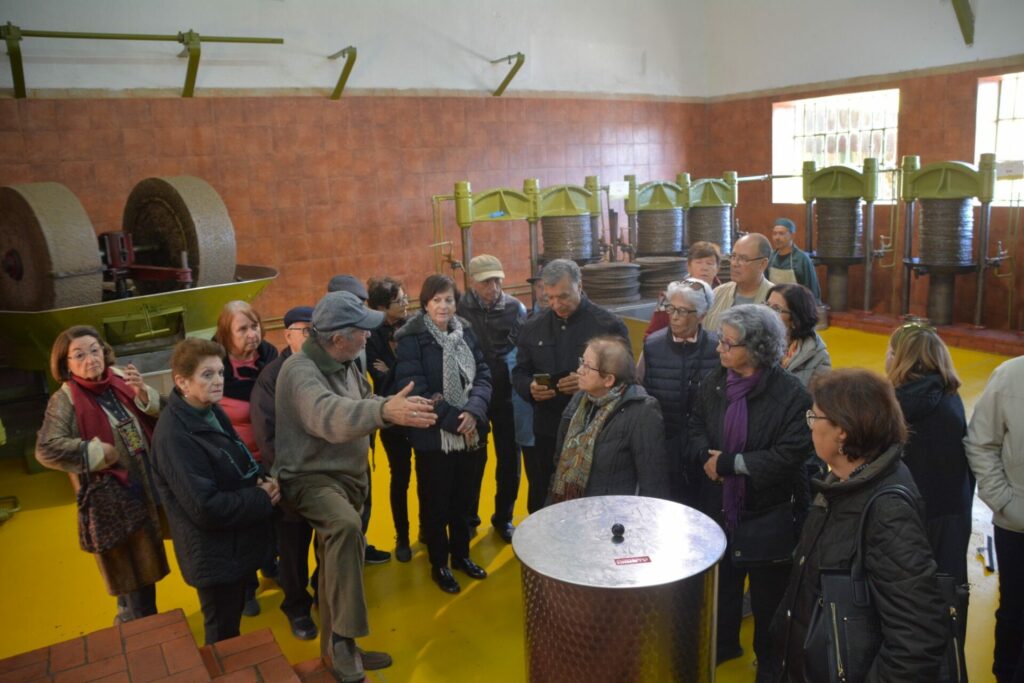
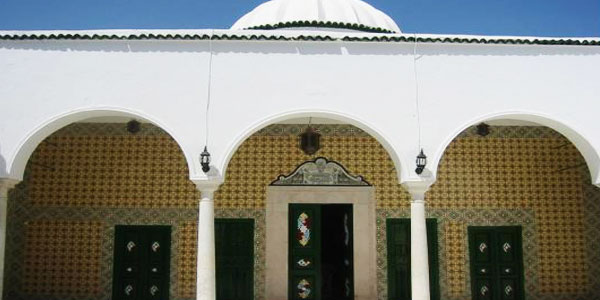
Zaouia Sidi Ben Aissa
Une zaouia est un édifice religieux musulman, autour duquel se structure un ordre soufi. Celui-ci, aujourd’hui classé monument historique, a été créé par l’ordre des Issawiya, confrérie et ordre mystico-religieux soufi marocain, fondé par Sidi Mhammed Ben Aïssâ (1465-1526 / 882-933 H.), surnommé le « Maître Parfait ».
Comme d’autres ordres soufis (Gnaoua et Hamadcha), les Aïssâwa sont célèbres dans le monde arabe pour leur musique spirituelle, et se caractérise par l’utilisation d’une sorte de hautbois (ghaita), de chants collectifs d’hymnes religieux accompagnés de percussions utilisant des éléments de polyrythmie.
On notera que cette confrérie possède dans son rituel cérémoniel des éléments non islamiques apparus au fil des siècles, tels que l’exorcisme et les danses de transe. Le mausolé Sidi Ben Aissa a été restauré à plusieurs reprises durant la période Husseinite notamment en 1813 et 1896, d’après les indications visibles sur le monument.
Ce lieu fait aujourd’hui office de siège pour Association de sauvegarde de Tébourba.
L’église Sainte Félicité et Sainte Perpétue
Que l’on a évoqué précédemment, est une église catholique construite à l’époque du protectorat français. Avant sa construction, la pratique du culte catholique connaîtra quelques années d’errance puisqu’une première chapelle fut construite en 1888 sur le domaine Schuiggui afin de permettre à ses employés siciliens de pratiquer leur culte, suivie d’une seconde. Jugée trop éloignée de Tebourba par les pratiquants de la ville, la paroisse y sera finalement transférée en 1901 où faute de locaux, les messes se tiendront successivement sous une tente, dans une grange puis une huilerie. La première pierre de l’église sera posée en 1903, provenant d’une basilique romaine située à proximité. Celle-ci sera détruite durant la 2 nde guerre mondiale, lors des bombardements de la bataille citée plus haut… Seule la cloche, bénie en 1905, en réchappera. Le bâtiment sera finalement reconstruit en 1947, plus grand et dans un autre style, adoptant certains codes architecturaux locaux. Elle y accueillera alors un collège pour jeunes filles d’excellente réputation. Cédée au gouvernement tunisien en 1964, l’église abrite désormais la bibliothèque publique de la ville. Le bâtiment est classé monument historique par l’arrêté du 1 er septembre 2000.
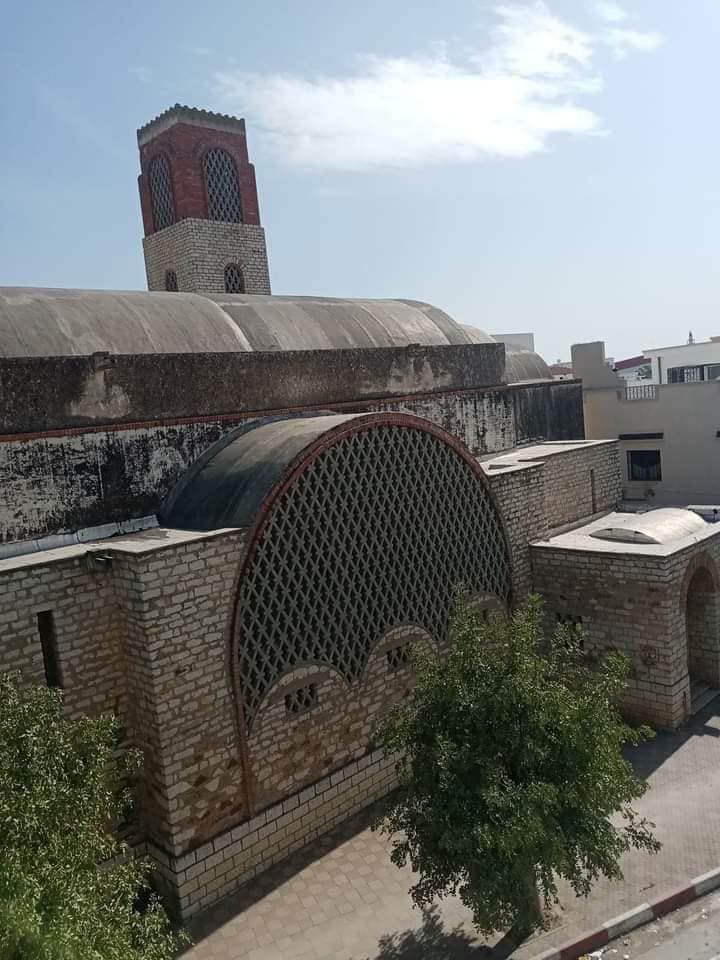
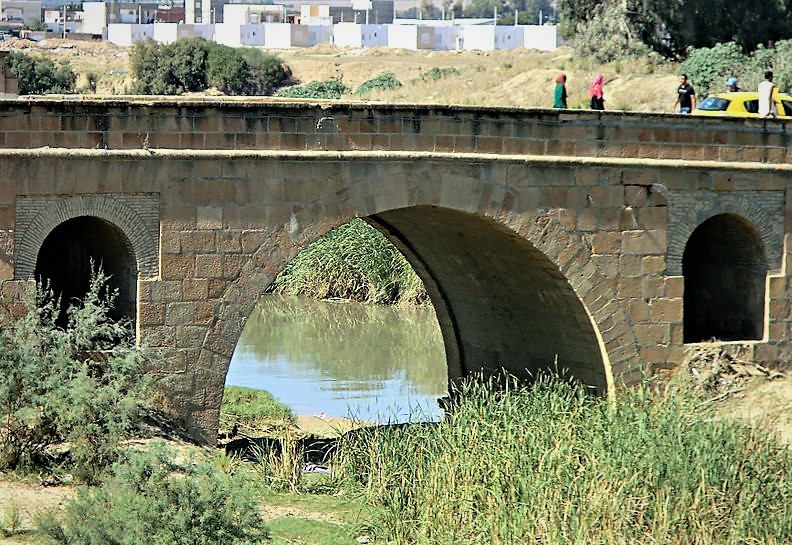
Les ponts de l’époque ottomane
On en compte 4 construits au XVII siècle sous le règne ottoman. Le premier, construit en pierre de taille et appelé pont de Bizerte est situé sur la route reliant Tunis à Bizerte. Le pont de Mejez al-Bab, achevé en 1677, constitue encore de nos jours une artère vitale de la ville homonyme.
Il enjambe la Medjerda et assure le passage de la ville de Mejez-el-Bab vers les jardins et les cités andalouses environnantes (Testour, Slouguia, Grich). On trouve deux autres ponts à Djedeïda et El Battan où furent également construits des moulins à foulon (Battan), des moulins hydrauliques et des barrages. Ces derniers fournissaient l’eau pour les foulons de la chéchia et permettaient d’irriguer les terres riveraines grâce à l’élévation de l’eau de la rivière. A noter que les matériaux utilisés pour ces ponts sont issus en partie de sites antiques situés à proximité, on peut d’ailleurs distinguer des inscriptions latines sur certains blocs.
Un atelier traditionnel de lavage et de foulage de laine pour la fabrication des chéchias
Le foulage consiste à laver à l’eau chaude et presser les ébauches de chéchias afin de conférer au tissu une meilleure tenue. La confection de tels bonnets remonte semble-t-il à l’antiquité, puisque l’on retrouve des illustrations de couvre-chefs similaires en feutre à l’époque de Carthage (l’une d’elle est visible au musée du Bardo sur une stèle en provenance du tophet de Carthage). On rattache traditionnellement l’histoire de la chéchia à l’arrivée des arabes andalous en Tunisie peu après 1600.
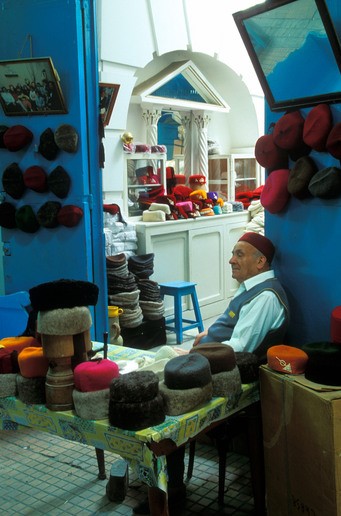
L’industrie des chéchias connaîtra un essor particulier au début du XIXème siècle en Tunisie qui aboutira à une spécialisation régionale : le tricot des bonnets se faisait à l’Ariana, le foulage à el Battan et Djedeida, et la fameuse teinture rouge à Zaghouan.
A noter que la chéchia tunisienne, aujourd’hui véritable patrimoine national, atteindra une renommée internationale à cette époque, et s’exportera en Algérie, Libye où elle est de couleur noire, au Cameroun, au Nigeria, en Egypte, au Soudan, en Turquie et en Grèce, la Tunisie étant le seul fournisseur au monde.
Aux alentours de Tebourba, on peut également découvrir d’innombrables restes de citernes, d’aqueducs, mais également des bâtisses, restes de thermes, arcs de triomphe… Mieux vaut être accompagné d’un guide pour y accéder aisément.
Etape gourmande
Découvrir un endroit, son histoire et sa culture, c’est aussi faire honneur à sa tradition culinaire.
La ferme de l’Hérédium
accueille les gourmets autour de sa table d’hôte, où l’on se régale de spécialités locales cuisinées maison. Les petits plats sont concoctés à base des produits de la ferme issus de la permaculture.
On peut y déguster par exemple la fameuse Mhamsa blanche de Tebourba, spécialité locale de pâtes traditionnelle, élaborée à la main avec du blé du sel et de l’huile d’olive. Ressemblant à de la graine de couscous à très gros grains, on l’accompagne traditionnellement avec des sortes de petites merguez locales, pruneaux, abricots et amandes.
Et pour ceux qui le souhaitent, on peut clôturer son repas par une petite balade digestive dans le verger, accompagné du propriétaire, Jihed, qui explique volontiers aux intéressés les principes de la permaculture qu’il met en œuvre dans ses plantations.
Et il y en a aussi pour les enfants puisque l’Hérédium organise des jeux de pistes, accueillant groupes et écoles.
Régulièrement, le Lemon Tour organise des sorties à Tebourba.
Abonnez-vous à la newsletter pour être tenu au courant des sorties accompagnées à vélo !

